Komodo 13 is World Champion of computer chess
In Macau (China) the "Chess Events" of the International Computer Games Association (ICGA) came to an end last week. In fact, behind this prosaic name are world championships in three disciplines: the World Computer Chess Championship (WCCC), the World Chess Software Championship (WCSC) and the Speed Championship. At the start were six teams with their programs, including Komodo 13, which won in each of the two main disciplines WCCC and WCSC. | Photos: Erdogan Günes
"ICGA Chess Events 2019" in Macau
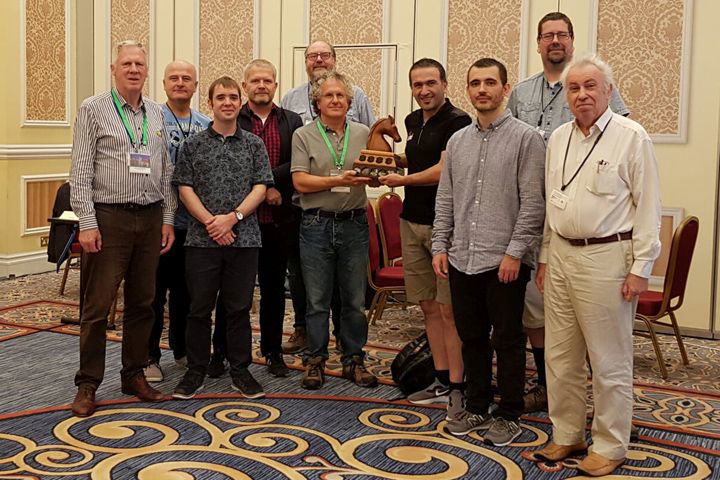
Founded in 1977 by the Scottish International Master David Levy, the "International Computer Games Association" is no longer concerned only with chess, but also with, for example, Go. The computer world championship has been around since 1974; It has been held annually since 2002.
Those who have never studied the subject of computer chess will probably wonder what the difference between the World Computer Chess Championship and the World Chess Software Championship is. The decision announced ten years ago by the ICGA reveals it:
1. The World Computer Chess Championship for the Shannon Trophy will be contested by teams who have no restriction placed on them as to their choice of hardware.
2. A new tournament will be called called the "World Chess Software Championship" to be held at the same location and during the same period as the WCCC. This will be a uniform platform event using computers loaned by the host organization. In each game played in this tournament the two computers will, as far as possible, be identical with respect to their hardware capabilities: number of cores, processor speed, memory size.
So for the WCCC, there are no restrictions on the hardware on which to run your program. In WCSC, on the other hand, it is necessary to use computers provided by the organizer, which should be equipped equally for both opponents.
Not quite as important as the WCCC and the WCSC is the "Speed Championship", which shares a day in the schedule with an excursion.
The video below (about one and a half minutes) shows that the championship is not (yet) quite as futuristic as you might think. The operators are flesh and blood playing out the machine's moves on a normal chessboard:
The "Shannon Trophy," which rewards the title in the WCCC, is named after the American mathematician Claude Shannon (1916 - 2001).
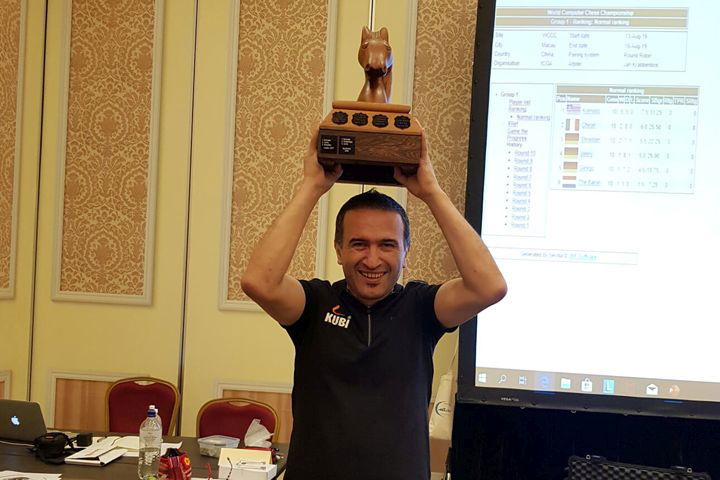
Erdogan mans the dragon
Erdogan Günes sent us the following first-person account of the Software Championship.
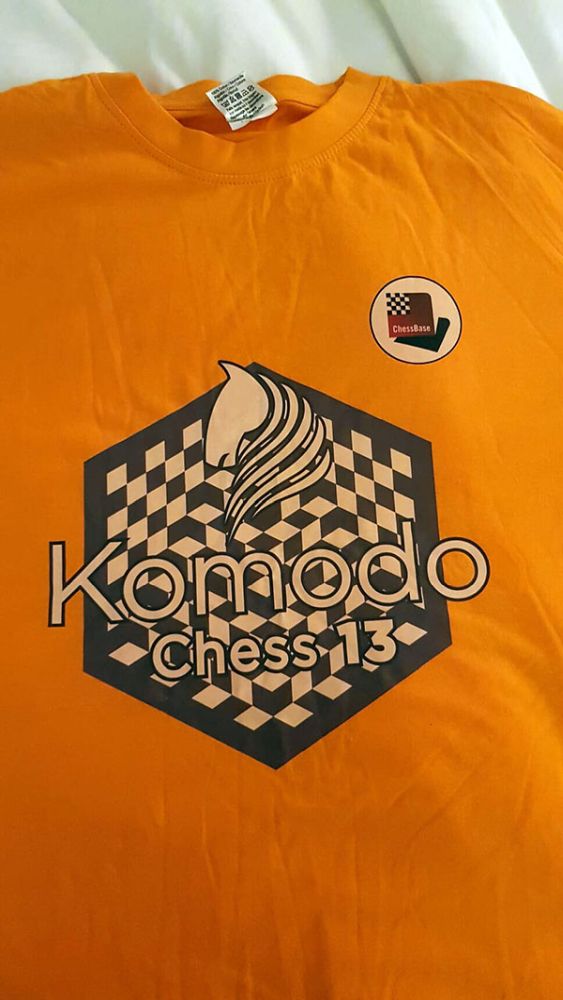
After the turbulence experienced at the start on the way there, my ambition of successfully defending all three titles disappeared. Since as a rule we (Team Komodo) arrive a day in advance, I was able to recover to some extent from the strains, more or less. On day one when we first of all, for example, set up our hardware over the internet: how fast is the internet service to the main computers and also to the backup machines which we had prepared? Then, for the software tournament the Tablebases are to be installed on the standard computers, and, and, and... There was lots to do there and then, and we helped each other out since we have become like one big family (like a caravan in the desert).
When we had also sorted things out in the players meeting and after the drawing of lots, the first pairings were announced. You could see how, after the pairings were announced, some programmers rushed to their computers like Usain Bolt and Rambo combined in a single person in order to make the final preparations for the opponents they now knew they would face. I had already done my homework at home and simply remained cool and looked on as the others created a sort of panic.
And things also got off to an immediate start with the software group; our daily program was also very tightly scheduled, unfortunately. It seemed to me that we would have hardly any time to breathe. From nine in the morning till the late evening at 22:00 we were in the tournament hall had to play our games.
My first opponent was no less than the several-time world champion Shredder, a warrior of old which looks as if it is getting on a bit (grey hairs). This time Stefan [Meyer-Kahlen] was in good spirits with his hybrid program and just as in previous years he had come to the tournament with high ambitions. On the other hand, I had prepared a sort of set of marching orders to use against Shredder, well before the tournament. After I had also studied during my work at home the games of my opponents from previous tournaments, I found something from previous years, namely its inclination towards the safer openings. It did not want to take any great risks and especially not at the start of each tournament. Just like a boxer who after the bell first of all starts by feeling out his opponent. Well my motto for Team Komodo is just like my opening book for the tournament: “No Risk, No Fun”. This is the frame of mind in which I turned up for our first game against Shredder. From testing at home with Deus X beta v1.18 (soon to become Fat Fritz) or Leela Chess Zero and other neural network programs I knew that it is only from a certain depth that the networks can show their potential over the board. For that reason the standard computer which we had for the software tournament (hardly any faster than a cardiac pacemaker) was like a handicap for the neurons. Since I wanted to reserve my front-rank openings for the open class, I made use of side variations.

My next encounter was against the next title hopeful and long-term rival Jonny which had the white pieces. Just keep things on a quiet and even keel was my watchword. So, probe and set things up for a long and solid game so that with less time available towards the end the neural networks could no longer achieve their usual depth of calculation and thus would not find the best moves. No sooner said than done. After a solid opening by both sides, around approximately move 21 there were more or less mass exchanges on the board and we each had hardly enough material left to do any damage to our opponent. After a few more banal moves there was the unavoidable draw.
The third game saw us matched against Chiron; I have a good idea how it makes its books. My plan against Chiron was to conjure up some complexity on the board, since unlike Komodo its engine has less chess knowledge. Thus with the weak hardware it would certainly also make a lot of strategic mistakes. And things came to pass as I had imagined them. It repeated the Komodo vs Shredder game from the first round in the hope that the enemy would be sleeping, but the fact that instead of Be4?! I had Bg6! in my Komodo book did not feature in his calculations. In this game the saying crossed my mind that “Sheep that stray far from the flock get eaten by the wicked wolf”. That is precisely what happened with the far-advanced a6-pawn!
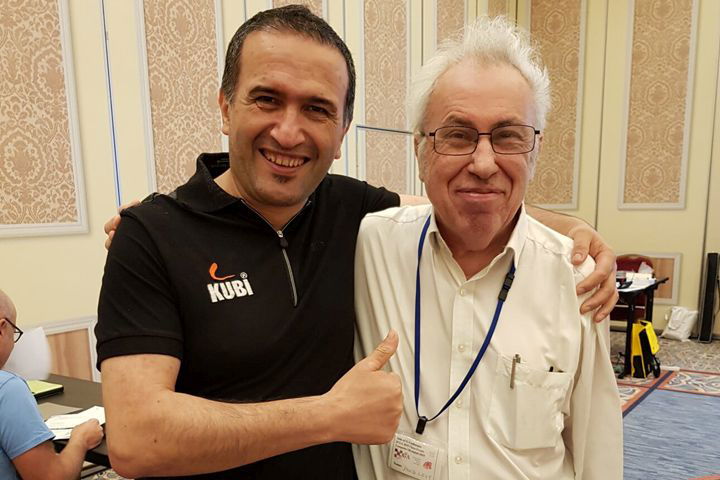
The fourth encounter against Ginkgo saw standing opposite me a good old friend Wolfgang Zugrav, with whom I had also collaborated in some projects (Hydra) and also advised him in his correspondence games with Komodo. This time he had prepared something against me, a line which we had already analysed together. Only our opinions were quite different in the decisive position:
Komodo vs Gingko
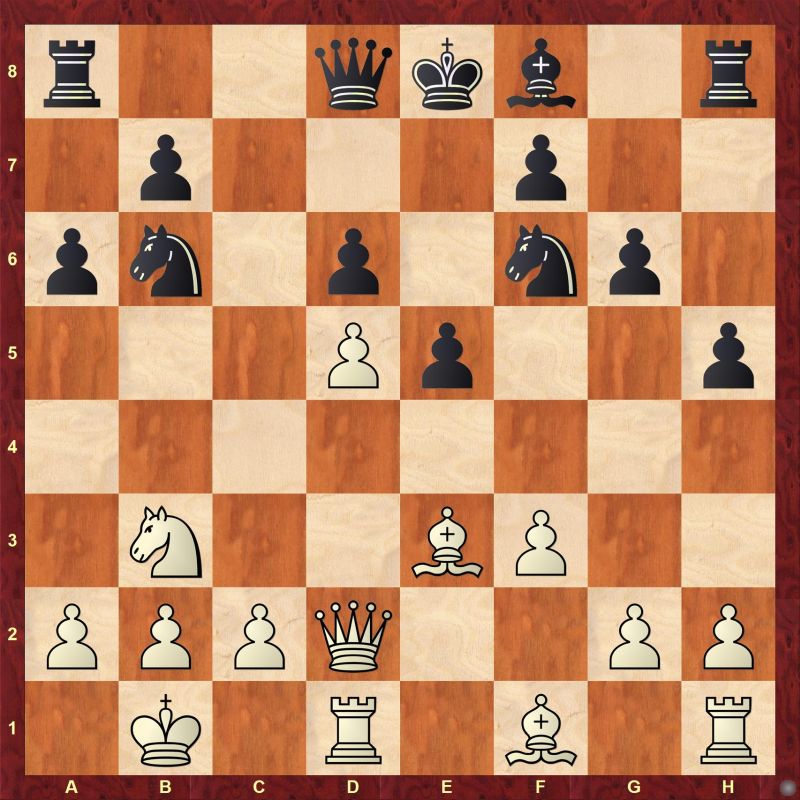
Does the b- or f-knight take on d5? I was the one who championed Nbxd5 and in this WCh game Wolfi wanted to prove to me that Nfxd5, i.e., the other steed is a playable option. I then probably learned more with his correspondence chess analyses after the game. After all the exchanges the position was as dead as a dodo and we longingly waited with bishops of opposite colours for a sharing of the point.
As for the game against The Baron, to this day I have no idea what Komodo and above all The Baron were thinking about. After a solid opening by White there was a skirmish and suddenly Komodo was a pawn up. But The Baron’s knights must have gone crazy and his king set on the long route to get at the white king. I thought he had been watching the film SPARTA and had become over-confident (lol). After some toing and froing we established that The Baron apparently had a bug in Tablebases and because of it had wrongly evaluated the position wrongly. OK a point is a point, so notch it up and on we go!
Day 1 was over and Team Komodo saw itself at the top of the table. Now some teams had to lick their wounds and iron out bugs in the program code and find holes. The same procedure as in previous years and we will have to keep repeating it until we have reached the 32 piece tablebase.
Day 2 dawned and with it the return round for the software group. A Shredder programmer in good humour and self-confidence was facing me with the white pieces. But after Komodo had left its book one thing was clear — White would not be winning any cigar here without queens on the board! Ten moves later the speedometer showed that Black was still in the driving seat but that there would not be enough in it for further advantage and a win. Thus Shredder had a happy ending in this encounter.
In our second meeting with Jonny I wanted to experiment a bit, but Komodo did not want to play the way its mentor had hoped despite having the bishop pair.
Komodo vs Johnny
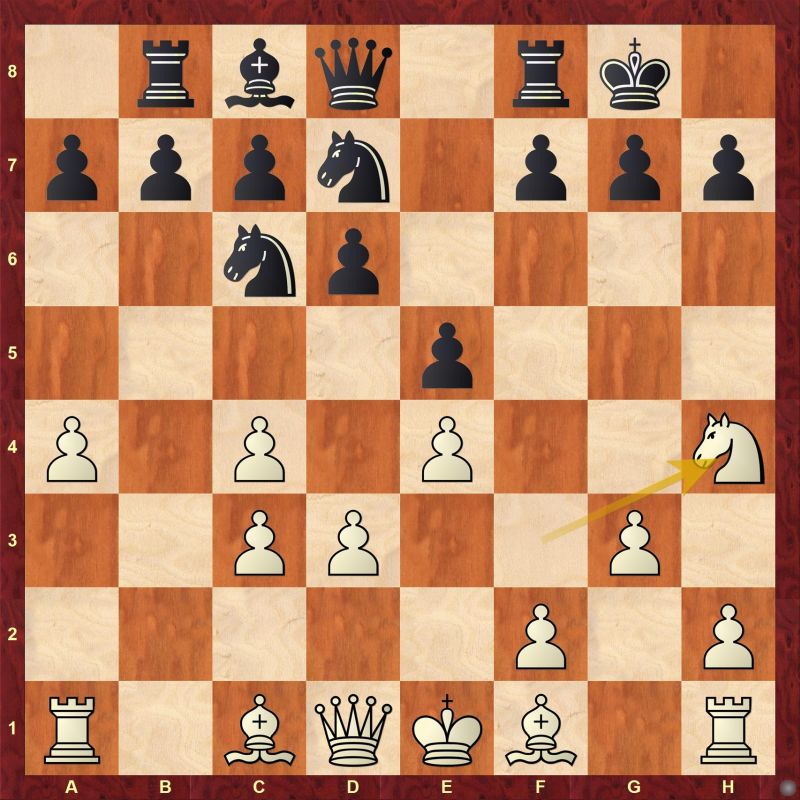
My idea was that by means of Nf5 or f4 to f5 White would work up a kingside attack à la carte, but no, on account of the lack of calculating depth and the complicated position I had to get involved in a queenside skirmish. Apart from holding its own Komodo unfortunately achieved nothing.
In our second meeting with Ginkgo the following idea ran through my head. They are letting me play against my own openings, or so I felt. In our jargon these guys are also called Copy Pasters, but OK, lines which have been played before need to be taken into account and can one day crop up against oneself. So let’s act according to the motto that what Magnus Carlsen and Co play cannot be bad. My plan was simply not to let our lead slip and to play something solid. They want to have a go at me and so they will have to come up with something... More risk, gentlemen! So it turned into a boring game in which we cannot see White coming up with any ambition to win. During the game I thought to myself, “if he does not want to win with White, what colour does he want to win with then?"
The Baron had more luck with its choice of opening this time, whereas Komodo sacrificed a pawn in order to get active play out of its ruined opening. This time I had the SPARTAN king on my side and it rushed over into the enemy camp (ATTACK!) and I was thus able to secure the draw.
In the last game of the day against Chiron I wanted to extend my lead for a victorious defence of the title, that was my plan. Anybody else would have headed to the safe haven of a draw in order to keep on the safe side. Not my way, I keep going where others stop! Well my choice of opening had been thought out for Komodo running on several cores. I was confident about the opening, but Komodo again put a spoke in my wheel on account of the lack of depth of calculation. Ah well, for me the depths were pitilessly low. Komodo on my mobile had more PS than the pacemaker on which we had to play, lol. In the game Komodo simply could not conjure up its strength on the board, unfortunately. Apart from a nice-looking centre White had nothing, but it was enough to steer to the secure harbour of the draw and thus to take the title in the software group!
Translation from German by John Adams
Final Standings (WCSC)
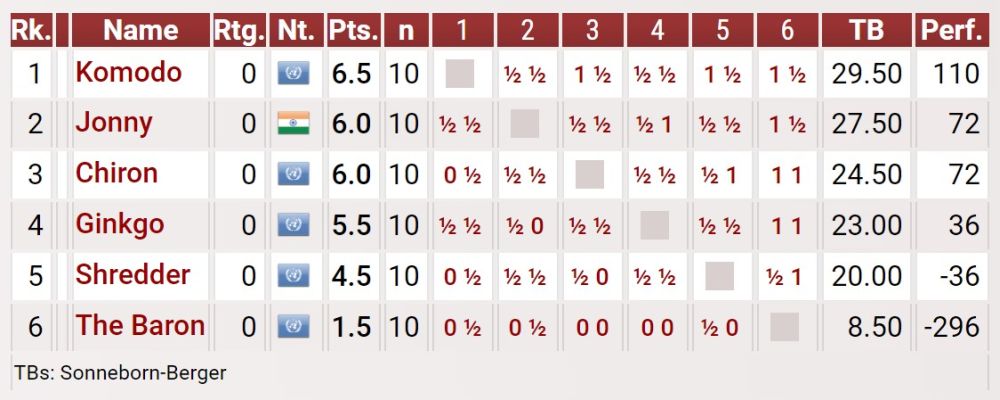
All games (WCSC)
Report on the WCCC from the ICGA (PDF)
Final Standings (WCCC)
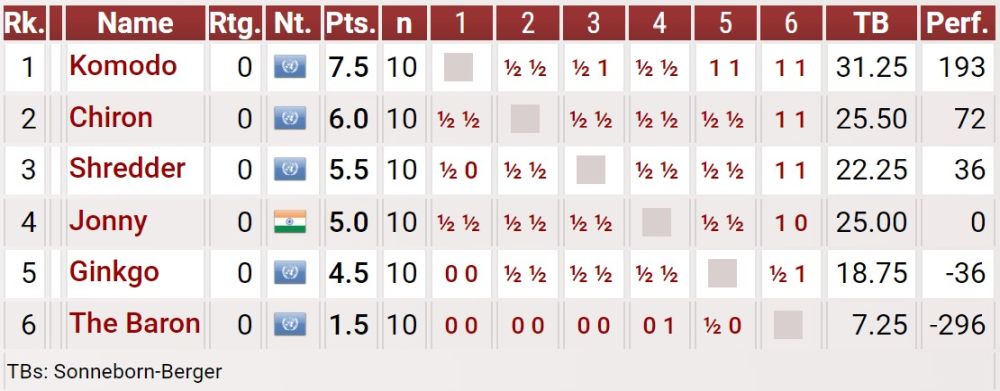
All games (WCCC)


